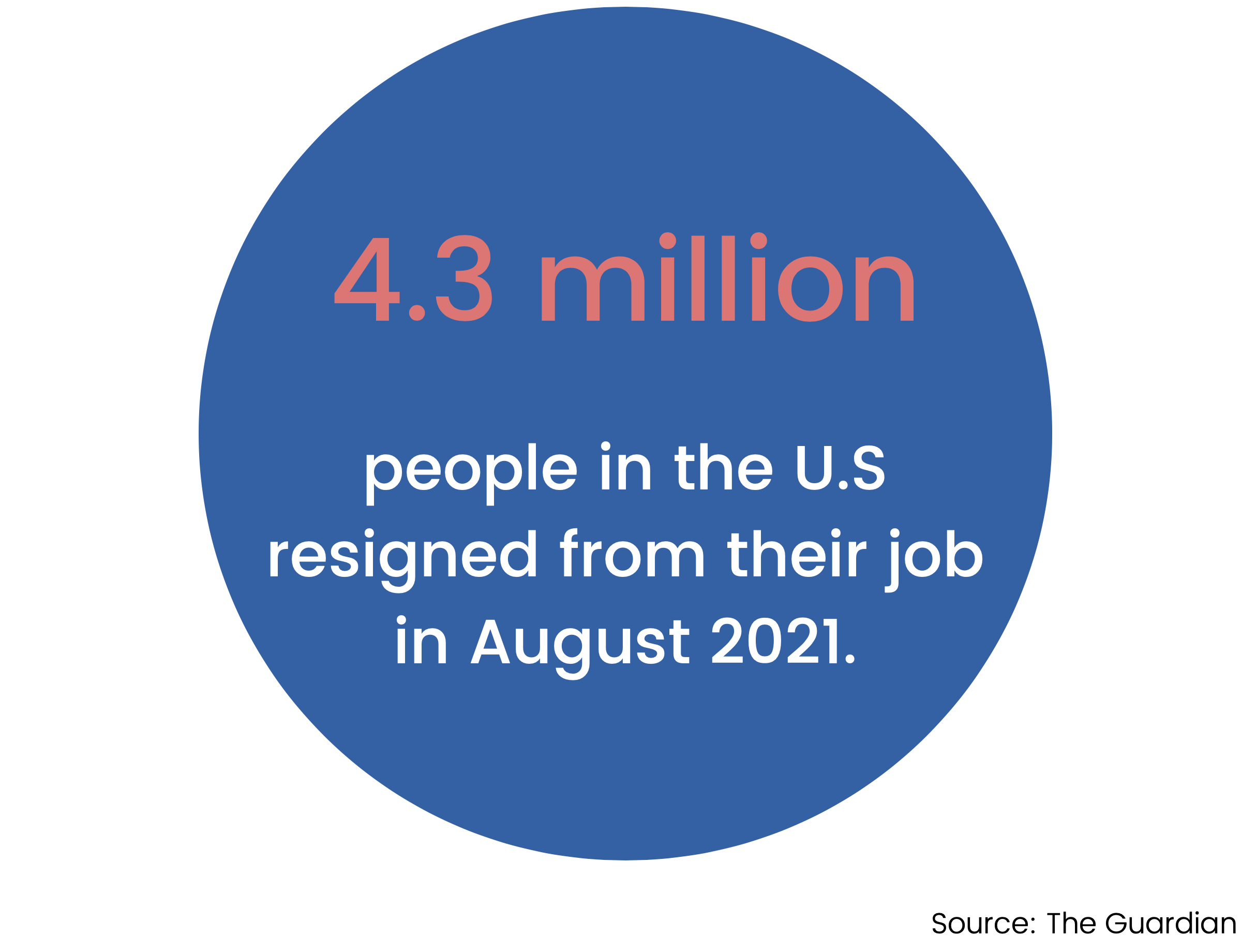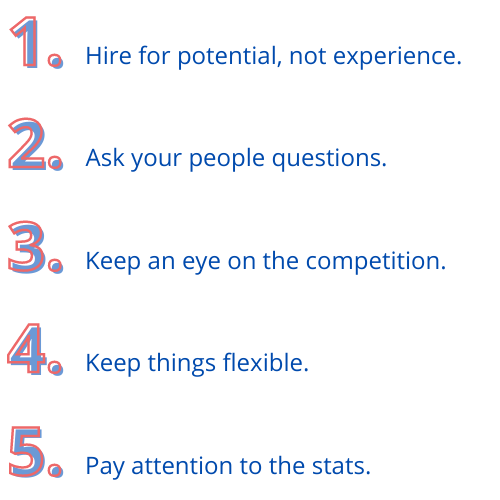5 Employee Retention and Hiring Strategies that Work
‘The Great Resignation’ - a tidal wave of people quitting their jobs in search of better opportunities - is an ongoing trend that has been present since the Spring of 2021. Largely due to the Coronavirus pandemic causing people to rethink their careers and long-term goals, it is more important than ever for organisations to take action, and be more proactive with their employee retention strategies, and, rethink their hiring strategies.
Let’s start with some stats…
Since the Spring of 2021, millions of people around the world have been resigning from their jobs for a variety of reasons. Whether they’re after the flexible working schedule that was forced upon many of us during the height of the pandemic, or simply not feeling safe at work anymore, COVID-19 has introduced a trend that is still very much upon us 2 years since the first cases of Coronavirus emerged.
According to their national statistics, a record 4.3 million Americans resigned from their roles in August of 2021. Europe hasn’t escaped the raft of the Great Resignation either; according to a survey carried out by HR Company SD Worx, a large percentage of employees have left their roles as a result of the pandemic, with Germany being hit the hardest.
So now we know the impact that COVID-19 has had on employment rates, let’s look at ways in which leaders and organisations can try and retain as many employees as possible, and continue to hire the very best talent.
1. Hire for potential, not experience
Time and time again, we see job descriptions stating that the successful candidate must have a university degree and five years experience in ‘X’. Whilst these may be essential requirements for specific roles i.e. medical professionals; researchers have found that for a lot of jobs, employees will still need to learn at least 10 additional skills within their first 18 months in the role anyway (Harvard Business Review, 2021). So even though the new recruit may reach all the job requirements when they start their new role, they’ll still need a certain level of upskilling in the first year and a half of their employment.
Rather than being insistent that every candidate has a certain set of skills and experiences (which will be obsolete in a few months anyway), look for people who have a solid foundation and have the ability and desire to learn new things.
Keep all of this in mind when it comes to employee retention strategies too. Too often, companies don’t promote from within because they want to bring someone in with a fresh perspective, or someone who’ll ‘hit the ground running’. This strategy is a bit pointless as the position is going to change anyway. If your current employees are willing to stretch themselves and develop, consider promoting them, rather than looking externally.
2. Ask your people questions
An unhappy employee is much more likely to resign than a happy one. But how do you know whether they are happy or not, and how do you go about keeping them engaged? Most organisations default is to invest in training and development, which is a great way to increase engagement, but ONLY if employees have been consulted first.
You need to know what your employees want and need before you organise any training or development, otherwise it’s a completely wasted exercise and can actually disengage your people. The best way to find out what’s going on with your people is to create and distribute an employee survey (you can do this using our Survey and Assessments Feature on the T2 Hub). Here are some suggested questions you can include in it:
What parts of your job do you find the most interesting and rewarding?
What areas are you finding the most challenging right now?
Are there any other projects or additional responsibilities that you would like to be a part of?
Is there anything that you’re interested in that you haven’t been able to explore yet?
Getting some insight from questions like these will help you to tailor your training and development programmes so they are as relevant and as valuable as possible to your employees. Showing that you care about the development of your people makes a huge difference to employee engagement.
3. Keep an eye on the competition
Given the statistics highlighted above, it’s super important that the salaries you are paying your current and future employees are inline with your competitors. Remember, your competitors aren’t just the organisations that are in the same industry as you, they’re also the organisations that hire for the same position as you. For example, every organisation needs a finance manager, and an account manager. If what you’re offering is way below the market average, who do you think potential recruits are going to be more interested in working for; you or someone offering the current market salary?
4. Keep things flexible
For many organisations, the COVID-19 brought the concept of working from home; something that a lot of employers had never even considered. As restrictions were lifted, many of us continued to work from home, or switched to a more hybrid way of working, and as such, now people have got a ‘taste’ of working this way, flexible working is now high up on many people’s working wish list.
Obviously for some roles and industries, flexible working isn’t an option, but for those organisations that can still operate successfully with employees working from home, it’s something that you should be offering your current employees, and advertising to your future employees.
5. Pay attention to the stats
Having recruiting and retention techniques in place is great, but how do you know if they’re working or not? Like marketing departments track how their online advertising campaigns are going, HR and recruitment departments need to monitor the effectiveness of their recruitment and retention campaigns. If you’re trying out a new retention strategy and employee exit rates are increasing, something clearly isn’t working!
In Summary: thinking about recruiting and retention strategies is key for all organisations right now. 2020 and 2021 have brought a lot of change which many of us have adapted to and some ways, embraced. If your organisation is stuck in 2019, you’re at risk of losing your best people and will struggle to hire new talent. Taking on board some of the 5 strategies covered in this blog will truly make a difference to your employees both present and future.




